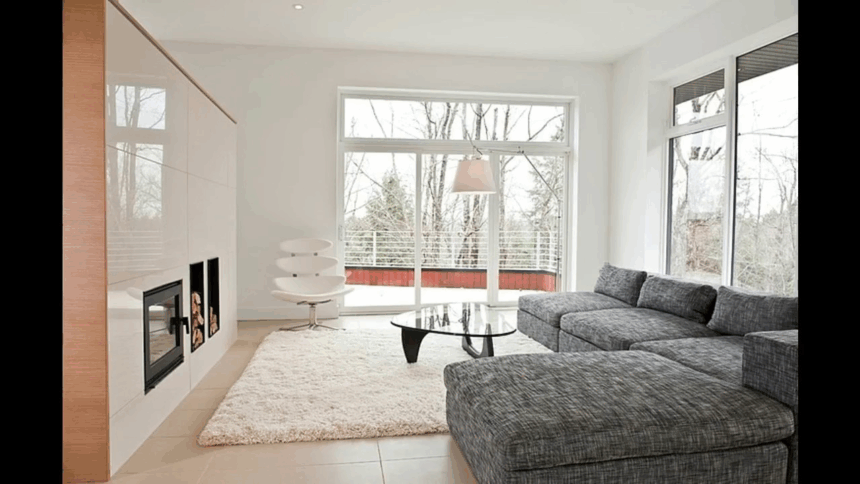In our fast-paced and noisy world, home should be a sanctuary — a place where you can rest, recharge, and feel completely at ease. But for many people, clutter, chaos, and constant distractions can make their home feel more stressful than serene. Creating a peaceful home environment doesn’t require expensive décor or a total renovation — it’s about making thoughtful changes that promote calmness, balance, and comfort.
In this article, we’ll explore how to create a peaceful home environment through simple lifestyle adjustments, design choices, and mindful habits that transform your space into a soothing retreat.
1. Declutter and Simplify Your Space
The first and most powerful step toward a peaceful home is decluttering. Clutter not only takes up physical space but also mental space. It can make you feel anxious, distracted, and overwhelmed.
Start small — one drawer, one room, or one corner at a time. Donate or discard items that you no longer use or love. Keep only what adds value or joy to your life. Once your home is decluttered, try to maintain it by adopting the rule: “One in, one out” — whenever you bring something new in, let go of something old.
A minimalist approach helps your home feel lighter, more open, and easier to clean — giving you peace of mind every day.
2. Choose Soothing Colors
Colors have a direct impact on mood and energy levels. When designing a peaceful home, choose colors that calm the senses rather than overstimulate them.
- Soft neutrals like beige, white, or gray promote serenity.
- Cool tones such as light blue, sage green, or lavender create a soothing atmosphere.
- Earth tones like warm browns or muted greens give a grounding effect.
Avoid overly bright or harsh colors in relaxation areas like bedrooms and living rooms. If you love vibrant shades, use them sparingly as accent pieces rather than main wall colors.
3. Let in Natural Light
Natural light instantly boosts your mood and helps your body stay in tune with its natural rhythm. Open your curtains during the day to let sunlight in. If your space doesn’t have many windows, use mirrors to reflect light and make rooms appear brighter and larger.
Consider using warm, soft lighting in the evening — avoid harsh fluorescent bulbs. Table lamps, floor lamps, or string lights with warm tones can help create a cozy and calming ambiance, perfect for winding down after a long day.
4. Add Elements of Nature
Bringing a bit of the outdoors inside your home is one of the simplest ways to create peace. Plants not only purify the air but also add life and energy to your surroundings.
Some great low-maintenance indoor plants include:
- Snake plant
- Peace lily
- Aloe vera
- Spider plant
- Pothos
You can also incorporate natural materials like wood, rattan, jute, or stone in your furniture and décor. Even nature-inspired artwork or sounds (like a small indoor fountain or a sound machine) can help you feel more relaxed and connected to nature.
5. Create a Quiet Corner
Every home should have at least one “quiet zone” — a place where you can disconnect and recharge. It could be a cozy reading nook, a meditation corner, or simply a chair by a window.
Furnish it with comfortable seating, soft lighting, and perhaps a small table for your books, candles, or a cup of tea. This space should be free from electronic devices and distractions — just a peaceful spot to rest your mind whenever you need a break.
6. Use Calming Scents and Sounds
Our sense of smell and hearing strongly influence our emotions. Aromatherapy can do wonders for relaxation and focus.
Some popular calming scents include:
- Lavender – reduces anxiety and promotes sleep
- Chamomile – soothing and comforting
- Eucalyptus – clears the mind and airways
- Sandalwood – grounding and spiritual
Use scented candles, essential oil diffusers, or incense to fill your home with gentle, pleasant fragrances. For sounds, play soft background music, nature sounds, or white noise — these can mask disruptive noises and create a tranquil atmosphere.
7. Keep Technology in Check
Technology is an essential part of life, but constant exposure to screens, notifications, and background noise can disrupt peace. Try setting boundaries with your devices:
- Designate tech-free zones, especially in bedrooms and dining areas.
- Turn off unnecessary notifications.
- Avoid screens at least one hour before bedtime.
These habits not only make your home feel calmer but also improve your sleep and relationships by encouraging more mindful, present moments.
8. Prioritize Cleanliness and Organization
A clean home naturally feels more peaceful. Set a simple daily or weekly cleaning routine — you don’t have to deep clean every day, but tidying up regularly helps maintain order.
Here’s a small routine you can follow:
| Day | Task |
|---|---|
| Monday | Dust furniture and shelves |
| Tuesday | Vacuum and mop floors |
| Wednesday | Clean kitchen counters and sink |
| Thursday | Organize closets or drawers |
| Friday | Wash linens and refresh rooms |
| Weekend | Relax and enjoy your clean home |
When your environment is clean and organized, you’ll find it easier to relax and focus on things that truly matter.
9. Personalize Your Space with Meaningful Items
A peaceful home is also one that reflects you. Surround yourself with things that bring comfort and joy — family photos, meaningful art, souvenirs from travels, or gifts from loved ones.
The goal isn’t to fill your home with stuff, but to decorate it with intention. Each item should have purpose, memory, or emotional value. When your surroundings tell your story, your space becomes more emotionally nurturing.
10. Create Daily Peaceful Rituals
Lastly, peace at home doesn’t just come from design — it comes from habits. Establish simple rituals that bring calm into your daily routine.
Some ideas:
- Start mornings with quiet reflection or gratitude journaling.
- Light a candle before dinner to set a peaceful tone.
- End the day by reading or meditating instead of scrolling your phone.
- Practice deep breathing when you enter your home after work — leave stress at the door.
These small actions may seem minor, but together, they build a rhythm of peace and mindfulness that transforms your home into a sanctuary.
Conclusion
Creating a peaceful home environment isn’t about perfection — it’s about intention. By decluttering, choosing soothing colors, embracing nature, and developing mindful daily habits, you can turn your home into a true haven of relaxation and balance.
Remember, your home should feel like a reflection of calm — a place where your mind can rest, your body can recharge, and your soul can breathe. Start with small steps, make meaningful changes, and you’ll soon notice how your environment can positively influence your inner peace and happiness.
Frequently Asked Questions (FAQs)
1. What colors make a home feel more peaceful?
Soft, muted tones like light blue, beige, sage green, or cream help create a calm and balanced atmosphere. Avoid overly bright or dark colors in relaxation areas.
2. How can I make my home peaceful if I live with kids or roommates?
Set quiet times, designate calm zones, and encourage shared spaces to stay tidy. Use headphones for private entertainment and teach everyone the value of peaceful coexistence.
3. What’s the best way to create a peaceful bedroom?
Keep your bedroom clutter-free, use calming scents like lavender, choose soft bedding, and limit screen use before bed. The goal is to make it your sleep sanctuary.
4. Do houseplants really help create peace at home?
Yes! Plants improve air quality and add a natural touch that helps reduce stress and promote well-being. Even a few small ones can make a difference.
5. How can I maintain a peaceful home long-term?
Adopt daily habits like tidying up, limiting noise, practicing gratitude, and keeping clutter out. Consistency is key — small actions every day help sustain peace.










